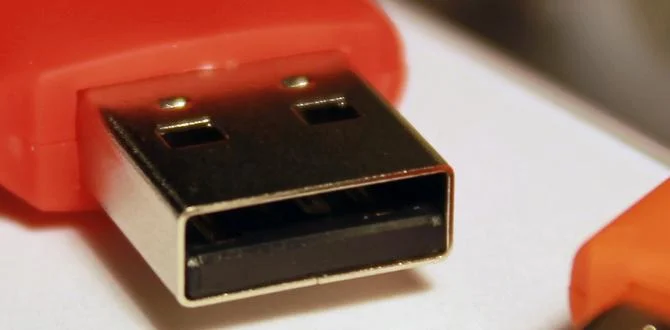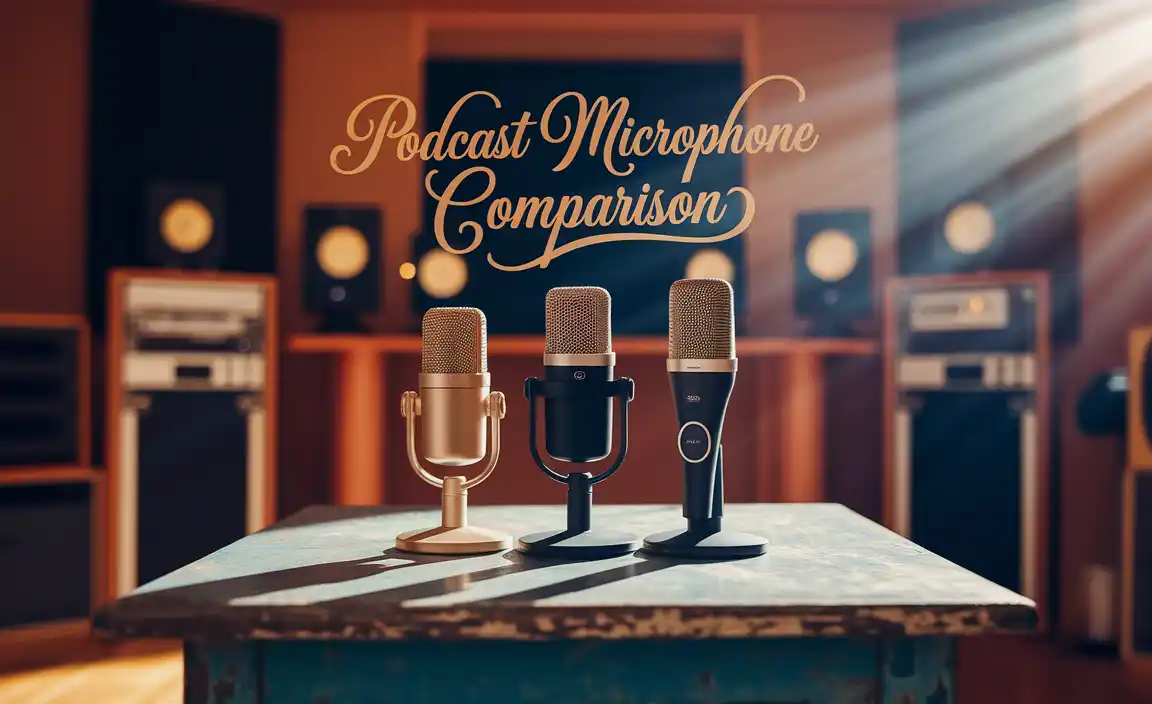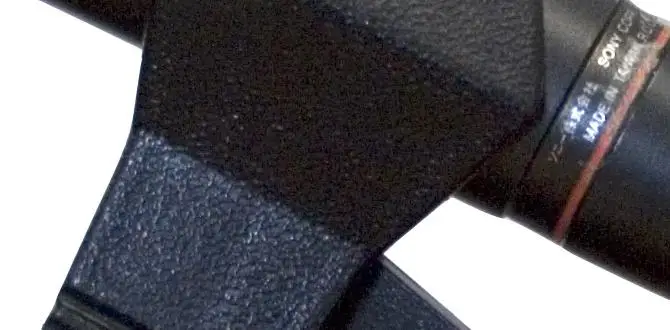Quick Summary:
Confused about TV resolutions and need help navigating your remote? This guide breaks down common TV resolutions (HD, Full HD, 4K, 8K) and shows you how to use your remote to access settings, adjust picture quality, and understand the benefits of each resolution for a clearer, more immersive viewing experience.
Are you staring at your TV’s settings menu, bewildered by terms like HD, Full HD, 4K, and 8K? It’s a common feeling! Understanding TV resolution is key to enjoying the best picture quality, and figuring out how your remote control fits into this puzzle can feel like a challenge. But don’t worry, we’re here to demystify it all. We’ll walk you through what each resolution means and, more importantly, how to use your remote to find, select, and optimize these settings for a truly stunning visual experience. Let’s get your TV looking its absolute best, step-by-step!
Understanding TV Resolution: A Picture’s Best Friend
Think of TV resolution as the number of tiny dots, called pixels, that make up the image on your screen. The more pixels you have, the sharper and more detailed the picture will be. It’s like comparing a simple sketch to a highly detailed photograph – more pixels mean more information and a richer visual experience. As technology advances, so does the number of pixels, leading to higher resolutions and incredibly lifelike images.
Why Does Resolution Matter?
Higher resolution means a clearer, sharper picture. This is especially noticeable on larger screens or when you sit closer to your TV. For instance, a 4K TV has four times the pixels of a Full HD TV, resulting in significantly more detail and a much more immersive viewing experience. This is why manufacturers are constantly pushing for higher resolutions, and why understanding them can help you make the most of your home entertainment.
Common TV Resolutions Explained
Let’s break down the most common TV resolutions you’ll encounter. Knowing these will help you understand what you’re seeing and what settings to look for on your remote.
HD (High Definition) – 720p
High Definition, often seen as 720p, was a big leap forward from older standard definition TVs. It has a screen resolution of 1280 pixels horizontally by 720 pixels vertically. While it was groundbreaking for its time, it’s now considered the baseline for modern TVs and might appear less sharp on larger screens.
Full HD (FHD) – 1080p
Full HD, also known as 1080p, has a resolution of 1920 pixels horizontally by 1080 pixels vertically. This is double the number of pixels of HD (720p), offering a noticeably sharper and more detailed image. For a long time, Full HD was the standard for most TVs and Blu-ray discs, and many viewers find it perfectly adequate, especially for smaller screen sizes.
4K Ultra HD (UHD) – 2160p
This is where things get really impressive! 4K Ultra HD has a resolution of 3840 pixels horizontally by 2160 pixels vertically. That’s four times the number of pixels as Full HD and about eight times the number of pixels as HD (720p). The result is an incredibly sharp, detailed, and vibrant picture that makes a huge difference, especially on larger TVs or when sitting closer. Most new TVs sold today are 4K, and a lot of streaming content and Blu-ray discs are available in this format.
8K Ultra HD – 4320p
The latest and greatest in resolution is 8K Ultra HD. It boasts a resolution of 7680 pixels horizontally by 4320 pixels vertically. This means it has double the horizontal and vertical resolution of 4K, offering a staggering four times the total number of pixels as 4K and sixteen times the number of pixels as Full HD. While content specifically made for 8K is still growing, 8K TVs can upscale lower-resolution content to look even better, offering an unparalleled level of detail for those seeking the ultimate picture quality.
TV Resolution Comparison Chart
Here’s a handy chart to visualize the difference in pixel count between common resolutions. Remember, more pixels generally mean a sharper, more detailed image.
| Resolution | Horizontal Pixels | Vertical Pixels | Total Pixels (Approx.) | Comparison to Full HD |
|---|---|---|---|---|
| HD (720p) | 1280 | 720 | ~921,600 | ~25% |
| Full HD (1080p) | 1920 | 1080 | ~2,073,600 | 1x (Baseline) |
| 4K UHD (2160p) | 3840 | 2160 | ~8,294,400 | 4x |
| 8K UHD (4320p) | 7680 | 4320 | ~33,177,600 | 16x |
Using Your Remote Control to Navigate TV Settings
Your remote control is your gateway to unlocking your TV’s full potential. While designs vary between brands (like Samsung, LG, Sony, Vizio, Roku TV, Fire TV, etc.), the basic principles for navigating to resolution-related settings are similar. Let’s explore how to use it.
Finding the Picture Settings Menu
Most remotes have a dedicated button for settings, often labeled “Menu,” “Settings,” “Home,” or represented by a gear icon (⚙️). If not, you’ll usually find it by pressing the “Home” or “Menu” button and looking for a “Settings” or “Picture” option in the on-screen interface.
Once you’ve found the main settings menu, you’ll typically need to navigate to a section like:
- Picture
- Display
- Advanced Picture Settings
- Screen Settings
Use the directional buttons (up, down, left, right arrows) on your remote to highlight the option and the “OK” or “Enter” button to select it.
Locating Resolution-Specific Settings
Within the Picture or Display menu, you might find various options. The exact terminology can differ. Here’s what to look for:
- Picture Mode/Picture Preset: These are pre-configured settings for different types of content (e.g., Movie, Standard, Vivid, Game). While not directly resolution, they affect how the picture looks at a given resolution.
- Resolution: Some TVs allow you to manually set the input resolution, especially for external devices. This is less common for the TV’s internal tuner, which usually auto-detects.
- Aspect Ratio: This controls the shape of the image (e.g., 16:9 widescreen, 4:3 standard).
- Advanced Picture Settings: This sub-menu might contain options related to sharpening, noise reduction, and sometimes even upscaling settings.
Adjusting for Optimal Viewing
Once you’ve accessed the picture settings, you can make adjustments:
- Select a Picture Mode: For general viewing, “Standard” or “Movie” modes are often good starting points. “Vivid” can make colors pop but might look unnatural. “Game” mode usually reduces input lag for better gaming performance.
- Adjust Backlight/Brightness: Too bright and it’s glaring; too dim and you lose detail in dark scenes. Find a balance that’s comfortable for your room’s lighting.
- Contrast: This controls the difference between the brightest whites and darkest blacks.
- Color and Tint: Adjust these to get natural-looking colors.
- Sharpness: Be careful here! Too much sharpness can create artificial-looking edges and artifacts, making the image look worse. Often, setting it to 0 or a low number is best, especially for higher resolutions like 4K.
- Upscaling Settings: If you’re watching lower-resolution content (like a DVD or HD broadcast) on a 4K or 8K TV, the TV uses upscalers to intelligently add pixels and enhance the image. You might find settings to control how aggressively this happens.
Tip: Many TV manufacturers provide online manuals for specific models. If you’re ever stuck, search for your TV’s model number and “user manual” online. You can often find diagrams of your remote and detailed explanations of each setting. For example, Rtings.com offers in-depth TV reviews and explains resolution in great detail.
Remote Control Buttons to Know
Here are some common buttons you’ll find on your TV remote and what they’re for, especially as they relate to picture settings:
- Power: Turns the TV on and off.
- Volume +/-: Adjusts the sound volume.
- Channel +/-: Changes TV channels.
- Number Pad: Directly enters channel numbers.
- Mute: Silences the audio instantly.
- Input/Source: Switches between different inputs (HDMI 1, AV, Cable, etc.). Crucial for selecting which device’s signal you want to view.
- Home/Smart Hub/Launcher: Takes you to the TV’s smart interface for apps and menus.
- Back/Return: Goes back to the previous screen or menu.
- Up/Down/Left/Right Arrows (Directional Pad): Navigates menus and options.
- OK/Enter: Selects a highlighted option or confirms a setting.
- Menu/Settings: Opens the main settings menu.
- Info: Displays information about the current channel or content, sometimes including resolution.
- Guide: Opens the electronic program guide.
- Exit: Closes the current menu or application.
Choosing the Right Resolution for Your Content
The best resolution for you depends on several factors, including the content you’re watching, the size of your TV screen, and how far away you sit.
Content is King
If you’re watching standard definition broadcasts or DVDs, even the highest resolution TV will only show what the source provides. For the best experience, you’ll want content that matches or exceeds your TV’s native resolution:
- HD Content (720p): Best for older broadcasts or lower-quality streaming.
- Full HD Content (1080p): Great for Blu-rays, many streaming services, and older game consoles.
- 4K UHD Content (2160p): Available on Netflix, Amazon Prime Video, Disney+, YouTube, 4K Blu-rays, and newer game consoles. This is where 4K TVs shine.
- 8K UHD Content (4320p): Still rare, but some premium content on platforms like YouTube and dedicated demo channels exist.
Screen Size and Viewing Distance
The larger your TV screen, the more you’ll benefit from higher resolutions. On a small TV, the difference between Full HD and 4K might be subtle. However, on a 55-inch or larger screen, 4K provides a significant improvement in detail. Viewing distance is also crucial. The closer you sit, the more pixels your eyes can resolve, making higher resolutions more impactful. The Society of Motion Picture and Television Engineers (SMPTE) recommends a viewing distance where at least 80% of your vision is filled by the screen for the most immersive experience, which is easier to achieve with higher resolutions.
General Guidelines:
- HD (720p): Suitable for smaller TVs (under 32 inches) or when sitting far away.
- Full HD (1080p): A good choice for TVs between 32 and 50 inches, or for those on a tighter budget.
- 4K UHD (2160p): Ideal for TVs 50 inches and larger, or when sitting closer to a smaller TV. It’s the current sweet spot for most home theater enthusiasts.
- 8K UHD (4320p): Best for very large screens (70 inches and above) or for those who want the absolute cutting edge and plan to watch 8K content as it becomes more available.
Troubleshooting Common Issues Related to Resolution and Remotes
Sometimes, things don’t work as expected. Here are a few common problems and how to solve them:
Problem: Picture looks blurry or pixelated.
- Solution: This could be due to the source resolution being too low for your TV or you sitting too close to a lower-resolution screen. Check the resolution of your content. If you’re using an external device (like a streaming box or game console), check its video output settings to ensure it’s set to the highest optimal resolution for your TV (e.g., 4K).
Problem: My remote isn’t working to access settings.
- Solution: First, check the batteries! If they’re fresh, try restarting your TV by unplugging it from the power outlet for 60 seconds and then plugging it back in. If the remote is still unresponsive, it might need to be re-paired with the TV (check your TV’s manual for pairing instructions) or it might be faulty and require replacement.
Problem: The resolution options I want aren’t available.
Solution: This usually means your TV or the connected device doesn’t support that resolution. Ensure your HDMI cable is rated for the resolution you’re trying to achieve (e.g., High-Speed HDMI cables for 4K and 8K). For external devices, their settings must match your TV’s capabilities. Also, some older TVs might not have options for 4K or 8K, as they were simply not built with that capability.
Problem: Picture is stretched or has black bars.
Solution: This is usually an aspect ratio issue. Navigate to your TV’s Picture or Display settings and find the “Aspect Ratio” option. Try cycling through different settings like “16:9,” “Wide,” “Zoom,” or “Original” to find the one that best fits the content without distortion.
Frequently Asked Questions (FAQ)
Q1: What is the best TV resolution today?
A1: For most people, 4K Ultra HD (2160p) is the best resolution available today. It offers a significant improvement in detail over Full HD and has widespread content availability.
Q2: Can my remote change the TV’s native resolution?
A2: Your remote typically can’t change the TV’s native resolution (what the screen is physically capable of displaying). However, it can be used to select the resolution of input signals from connected devices or to choose upscaling/picture modes that optimize how content appears on your TV’s native resolution.
Q3: Do I need a special remote for 4K or 8K TVs?
A3: Generally, no. Most modern remotes are designed to work with the TV’s capabilities, including 4K and 8K resolutions. Some premium remotes might have voice control or dedicated streaming app buttons, but the core function of navigating settings remains the same.
Q4: What resolution does Netflix stream in?
A4: Netflix offers different resolutions depending on your subscription plan and internet speed. The highest quality is 4K Ultra HD (2160p), but many users will stream in Full HD (1080p) or HD (720p).
Q5: How can I check the current resolution of the show I’m watching?
A5: Many TVs have an “Info” or “Display” button on the remote. Pressing this while watching content can often show you details about the current signal, including its resolution. Some streaming apps also provide this information within their playback details.
Q6: Will my old Blu-rays look good on a 4K TV?
A6: Yes, they will look better than on an old HD TV, thanks to the 4K TV’s upscaling capabilities. The TV will intelligently add pixels to the Full HD (1080p) image to fill the 4K screen, making it appear sharper and more detailed than it would on a native 1080p display.
The Future of TV Resolution
The journey of resolution has brought us from the fuzzy images of standard definition to the stunning clarity of 8K. While 8K is






